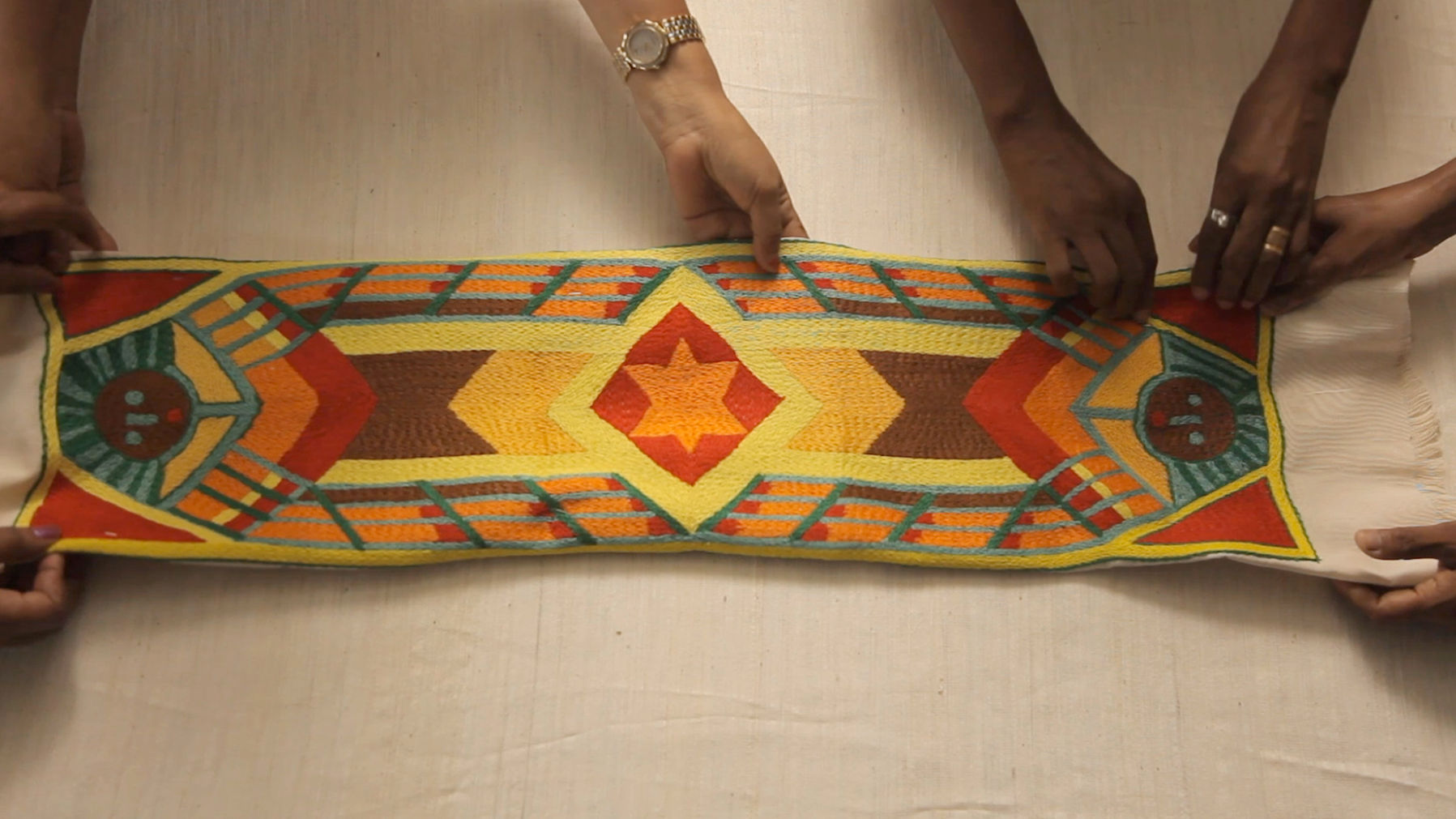Ethiopian Curtain of the Ark
sits at the intersection of contemporary art and ethnographic practice. It includes a hand-embroidered tapestry, a model of the Ark of the Covenant, a video work, and a series of paintings.

Ethiopian Curtain of the Ark, installation view at Herzliya Museum of Contemporary Art, 2012
Ethiopian Curtain of the Ark centers on the Kebra Nagast, the Ethiopian epic that expands the biblical tale of the Queen of Sheba and King Solomon, detailing their love affair and their son Menelik, said to have brought the Ark from Jerusalem to Ethiopia.This legend frames a story of cross-cultural transfer and recontextualization, raising questions about the movement of sacred objects and the shifting meanings they acquire across geographies and traditions.

Ethiopian Curtain of the Ark, Handmade embroidery, Hand loom woven cotton fabric, 6.5 x 8', 2012
The textile piece was produced with the Almaz embroidery workshop in Lod, Israel, led by Ethiopian Jewish women who immigrated in the 1990s. Its design draws on traditional Ethiopian motifs and adapts the form of a parochet, the curtain of the Torah ark. The work emerged through dialogue with the artisans, continuing the artist’s socially engaged practice of collaboration.




The Love Story of the Queen of Sheba and King Solomon (Excerpts), Video 6:32 minutes, 2012, Israel
The embroidery was fabricated at Almaz—a traditional Ethiopian embroidery workshop based in Lod, Israel. In the video, Aviva Almaz Rachamim, the manager of the factory, tells the canonical story of the encounter between the Queen of Sheba and King Solomon in Amharic. Her storytelling situates the work within an oral tradition and lived memory, highlighting how cultural narratives are transmitted through embodied, spoken word.

Manuscript — Paintings, installation view at Meislin Projects, New York, NY, 2017

Manuscript (A series of 16 drawings), Acrylic on paper, 11 x 14" each, 2012
Manuscript, a series of paintings quoting from the Ethiopian epic, explore the translation between drawing and embroidery. Michaeli draws on Ethiopian folk aesthetics—shapes, colors, and codes—without directly replicating specific works, highlighting the tension and beauty of collaborative authorship.
Through both form and content, the project examines how objects become classified as historical artifacts and offers a critical lens on how such items are presented in museums. First shown in a contemporary art museum, it was later exhibited in ethnographic museums alongside Ethiopian artifacts. Folk and historical museum displays often present objects as settled facts, with little room for ambiguity or complexity. This project highlights the layered and often contradictory nature of identity, emphasizing that cultural narratives are never pure or singular, but are always shaped through mutual influence and exchange with others. It invites viewers to consider what might lie behind the curtain, navigating the space between art and history, fiction and truth, authenticity and forgery. In doing so, it opens a conversation about how meaning is constructed—and who gets to tell the story.
This project was commissioned by the Herzliya Museum of Contemporary Art.
































